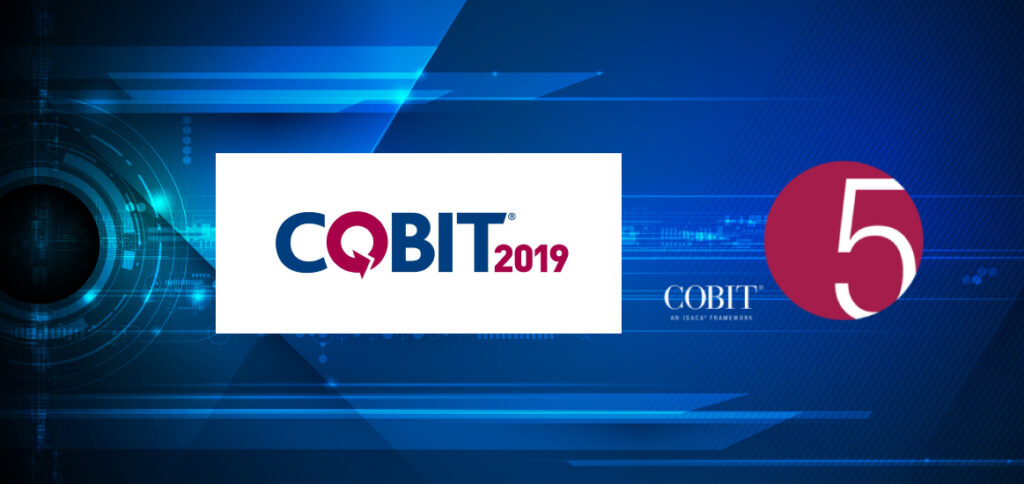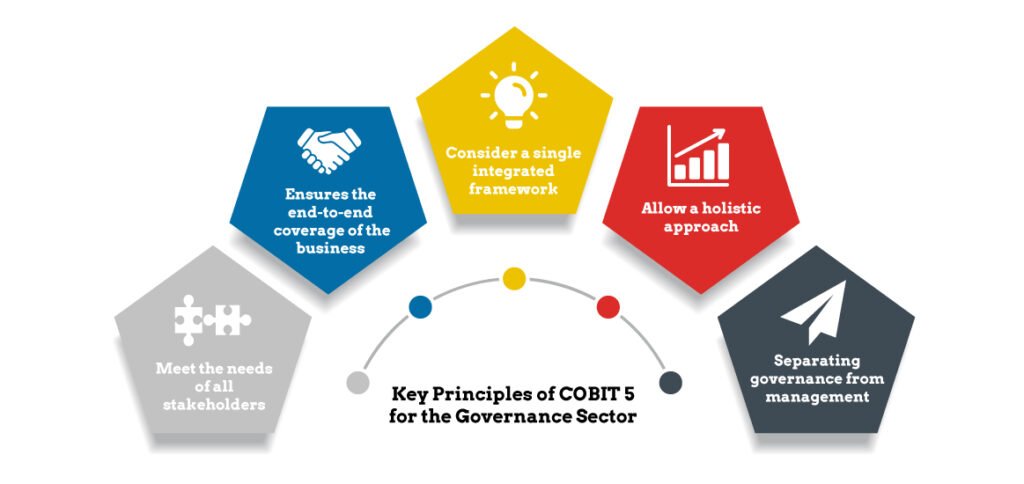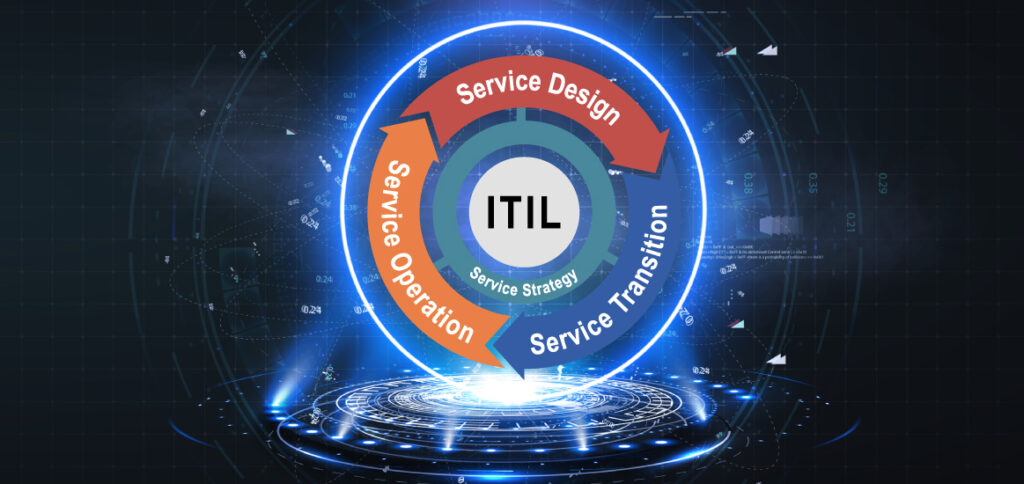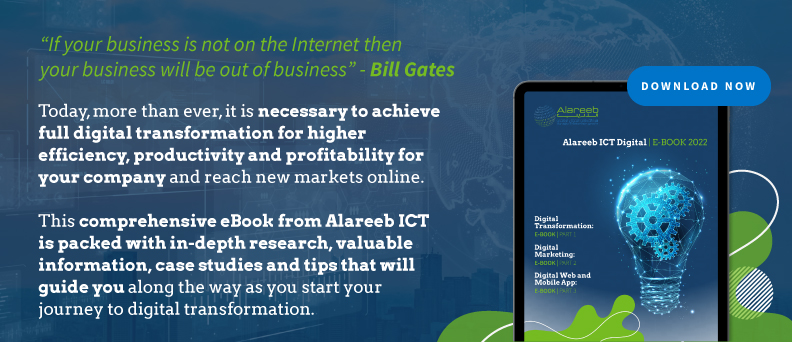Importance of IT Governance Standards and Frameworks
The term ‘ITIL’ is called information technology infrastructure library, which is a framework or a set of practices designed to help businesses plan, select, deliver, and maintain the overall life cycle in order to provide superior information technology services to customers.
Moreover, there are five different stages of the ITIL (information technology infrastructure library) service life cycle: service strategy, service design, service transition, service operation, and continual service improvement.
However, you need to understand that there are many service management frameworks available, and the way to manage different IT-enabled services can differ, but one of the best service management frameworks that are widely used is ITIL.
Alareeb ICT has also highly adopted this governance framework worldwide because ITIL is supported by the international standard – ISO/IEC 20000:2011 for IT services management.
Also, the other reason to choose ITIL as the good governance framework is its newest iteration that was launched in February 2019, and while using this framework, one can use a systematic approach to help enterprises manage their risks, increase their product’s efficiency, enhance customer relations, and develop a scalable and stable IT environment.
Apart from that, by aligning one’s IT systems with ITIL, it becomes easy to fulfill the unique business objectives and helps focus on the company’s budget goals and satisfy other processes.
Why does Alareeb ICT Adopt ITIL (Information Technology Infrastructure Library)?
The prime reason to consider, adopt, and implement ITIL within an organization is that it is a collection of best practices that we at Alareeb ICT follow for managing services.
You may know that we have a vast number of expertise and understanding of governance regulations, governance structure and gather many information technology-based best practices to work on the ITIL framework in an efficient way.
For example, the latest version of the ITIL framework can be divided into several categories. For instance, we define your business requirements in service strategy and concentrate on assets management and other strategies.
Furthermore, the service design includes the mapping out of services and helps in finding supporting elements. Whereas the use of service transition is related to the development and implementation.
Additionally, the next is service operations, in which the inputs are converted into needed outputs. The operations are performed daily, and the tasks are supported through resources such as backups, service desks, or others.
To make IT services and processes better, services are improved on a consistent basis. Also, the key performance indicators are examined as well as analysis is performed to fix the issues in the product and develop optimized proposals.
COBIT and COBIT 5: Definitions and Importance
COBIT is known as control objectives for information and related technologies. It is a set of guidelines and practices introduced in 1996 to support management while getting the most from IT resources.
It is an internationally recognized IT governance control framework that organizations can consider to meet their business challenges, especially in the areas of risk management and regulatory compliance. The organization can develop, implement, monitor, and enhance technology governance with its guidelines.
The aim of COBIT is given below:
- Helps align IT strategy with organizational goals.
- Helps in managing risks, resources, and IT efficiency.
- Bring IT values to business and ensure the effective management of the IT department.
- Use a top-down approach and create a set of benchmarks to help IT businesses satisfy the established goals.
- Arrange the implementation process for stakeholders to define, meet, and map out the goals. These goals are set to resolve the problems and are made to understand the IT processes that will be required.

COBIT 5
COBIT 5 is referred to as an internationally accepted framework for IT professionals, managers, and business executives to control and ensure the reliability and quality of information systems in the organization.
It helps in aligning business goals with IT processes and provides resources, tools, and guidance to identify, achieve, and associate IT and business process responsibilities of IT and business processes.
You need to know that COBIT was designed by the information systems audit and control association (ISACA). The same association has designed many versions of COBIT to assist businesses in applying IT governance and management as per the latest trends and requirements of changing needs.
Similarly, the purpose of COBIT is to bridge the gap between business risks, control requirements, and technical issues.
On the other hand, by utilizing COBIT 5, it becomes effortless for an organization to maintain a balance between resource usage, risk optimizations, and benefits realizations. This can even make it easy for companies to achieve their unique objectives and goals and helps in the improvement of business results.
Key Principles of COBIT 5 for the Governance Sector
- Meet the needs of all stakeholders.
- Ensures the end-to-end coverage of the business
- Consider a single integrated framework
- Allow a holistic approach
- Separating governance from management.

If you are planning to build a framework, you need to remember that these principles can be used for IT governance and management. Besides, there are seven enablers of IT governance, such as
- Policies, people, and frameworks
- Processes
- Ethics, culture, and behavior
- Processes
- Skills, people, and competencies
- Infrastructure, services, and applications
- Information
Both the enablers and principles encourage organizations to put their objectives and IT investments together in order to boost the value of those investments.
Importance of ITIL, COBIT & COBIT 5
Implementing ITIL (information technology infrastructure library) at work is important as it is the subset of ITSM, which is the IT service management, and ensures that businesses can easily meet their IT requirements. Some of the benefits of implementing ITIL are as follow:
- Promote a robust alignment between business and IT – One of the fascinating aspects of ITIL is it brings two departments together and ensures that both the company and IT will be on the same page. It helps address technical issues, gives a stronger commitment to providing the best customer service, and focuses on improving communications.
- Improve the quality of service and customer service – You need to understand that the purpose of ITIL is to help you get services benefits. From an IT perspective, the best practices of ITIL is to support the operating systems of enterprises and ensure their smooth operation.
- Risk management – Risk management is one of the benefits of implementing ITIL. If you have already built a strong alignment between IT and business, no one can stop you while mitigating risks. When using ITIL best practices, you can easily minimize risks by having a consistent level of quality for services and creating repeatable and accurate processes to make your systems up to date.
- Reduce the number of service interruptions – ITIL incident, change, and problem management processes are suitable for having service outages protection, and it enables you to quickly fix them whenever they occur. Accordingly, change management is one of the primary benefits of ITIL. This includes everything from generating incident tickets to applying software patches to upgrade the OS throughout the entire company.
- Regular monitoring – As discussed above, the advantage of applying ITIL is its ability to offer continual service improvement. It means it is easy to improve the past performance as per the number of choices, and one can engage in the best practices of ITIL and get high-quality service and better visibility.
- Seamless integration of ITIL with other projects – The major reason for adopting the ITIL framework by IT administrators is its compatibility with several frameworks like PRINCE2 and PMP. If you also want to achieve the benefits of ITIL, you can consider it for your 2022-2030 development and bring digital transformation to your company.

However, COBIT & COBIT 5 frameworks are also helping different sizes of companies. To know more, you need to check the following benefits.
- Enhance and maintain high-quality information to support business decisions.
- Promote operational excellence with technologies and allow you to achieve business goals when using IT effectively.
- Promise to manage IT risks and help organizations realize the value of IT investments and other resources.
- Help in achieving compliance with contractual agreements, laws and regulations.
For more information, you can book a consultation with one of our experts at Alareeb ICT and learn how our company can help you obtain benefits with IT/data governance services.
We also published our latest eBook that you can check out by clicking on the given link and downloading a copy to be informed about Alareeb ICT services in the GCC areas.





